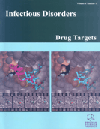
Full text loading...
Tuberculosis (TB) spreads through droplets that contain Mycobacterium tuberculosis (Mtb) and can infect susceptible people. Due to different risk factors, people have different susceptibility ranges towards TB. The risk factors are classified into three main groups, including bacterial, environmental, and host factors. Literature review reveals that the most important host risk factors are aging, male gender, genetics, epigenetics, having an impaired immune system, diabetes, malignancy, malnutrition, anemia, and pregnancy. The risk factors contribute to the increase in TB cases through inflammation, increased contact with TB patients, disruption of immune genes, changes in gene expression, increased activity of Mtb, damage to cellular immunity, reactivation of Latent TB Infection (LTBI), increased susceptibility to TB, compromised immunity, and changes in the proportion of T cell subgroups, respectively. Therefore, identification of the infection source and high-risk people and timely treatment of the patients can reduce TB mortality and help control the disease.

Article metrics loading...

Full text loading...
References


Data & Media loading...

